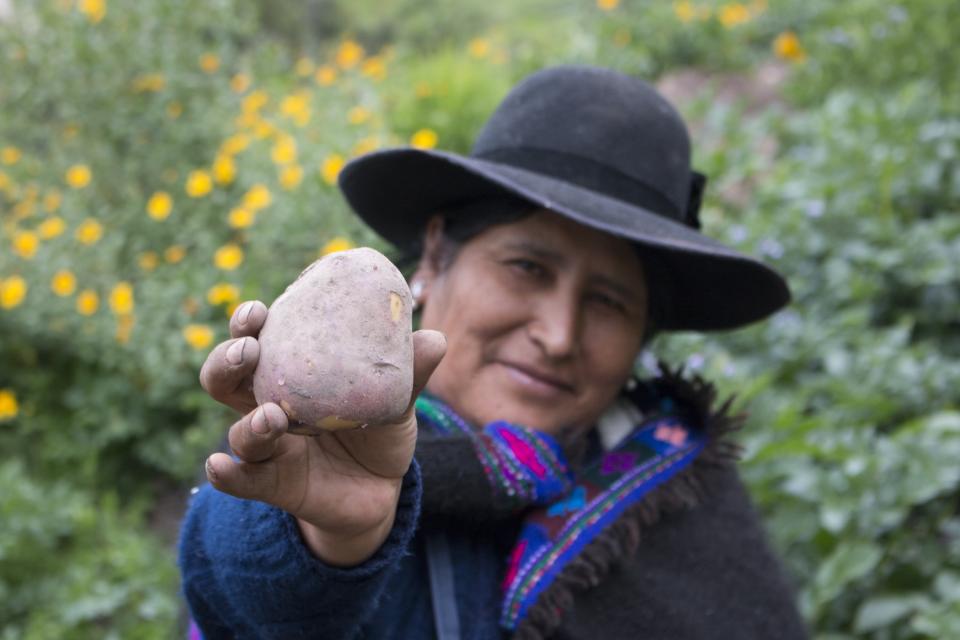Teaming up for more impactful breeding
 Photo: Georgina Smith/CIAT
Photo: Georgina Smith/CIAT
Breeders, economists, gender specialists, and food technologists gathered to advance new approaches to breeding crop varieties that people will want.
A two-day online “hackathon” jointly organized by the CGIAR Research Program on Roots, Tubers and Bananas (RTB) and the Excellence in Breeding Platform focused on key improvements to the impact of breeding programs. As these clonally-propagated crops are a foundation of food security in tropical areas, better breeding of improved varieties has the potential to lift millions of people out of poverty and contribute to improved well-being.
“The main aim of the hackathon was to work on two key tasks,” said Michael Friedmann, science officer at RTB. “How can we identify market segments for varieties of clonal crops? And how can we improve the corresponding product profiles that guide breeders to the sorts of improved varieties markets and producers want?”
To that end, the meeting brought together 42 people from 10 organizations and programs, a mix of breeders, economists, gender specialists, and food technologists. As well as sharing their experiences, participants also shared strategies for defining market segments and their associated product profiles. The first order of business in the online meeting was to hear the CGIAR Excellence in Breeding Platform approach for designing market segments and product profiles. A second presentation explained how the G+ tools developed by the RTB-led Gender and Breeding Initiative can be used to ensure that gender concerns are incorporated in product profiles.
Market segments and product profiles
The description of a market segment consists of two parts. The producer components relate to the production of the crop — where it is grown, what kind of production system and input levels it requires and so on. The consumer components relate to such things as how much is used on the farm or enters a value chain, the taste of the product, and its nutritional profile. Equally important is the size of the market and the impact that a new variety might have on different groups. The producer and consumer requirements translate into traits that must be present in the new variety to meet the needs of the identified market segment.
In building a product profile, it’s important to consider gender as men and women may value traits differently. The G+ tools are designed to enable breeding teams to elucidate these differences, ensuring that at the very least desirable traits do no harm to women. Indeed, ideally, a new product will have positive benefits for women, for example by reducing drudgery or enhancing their potential to control value-added products and gain employment and income.


